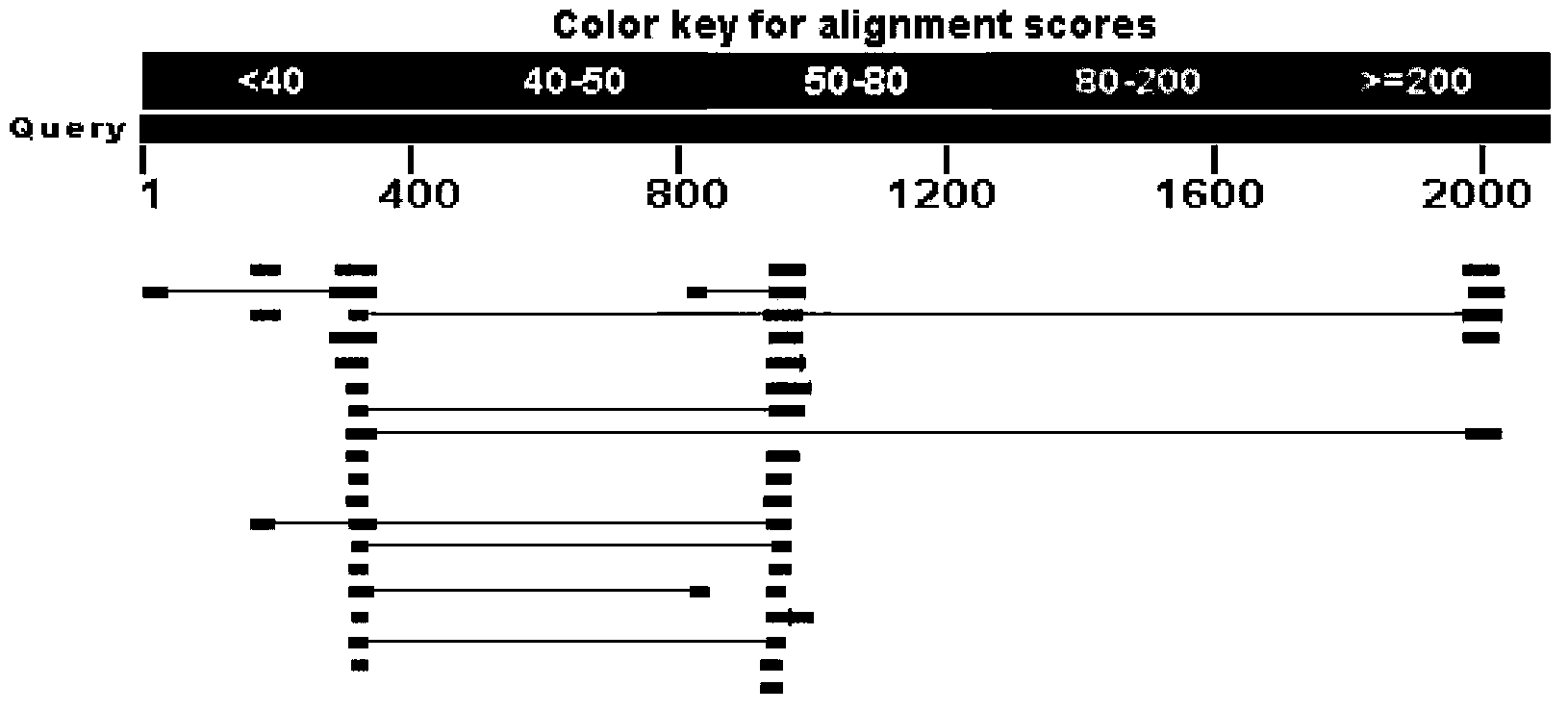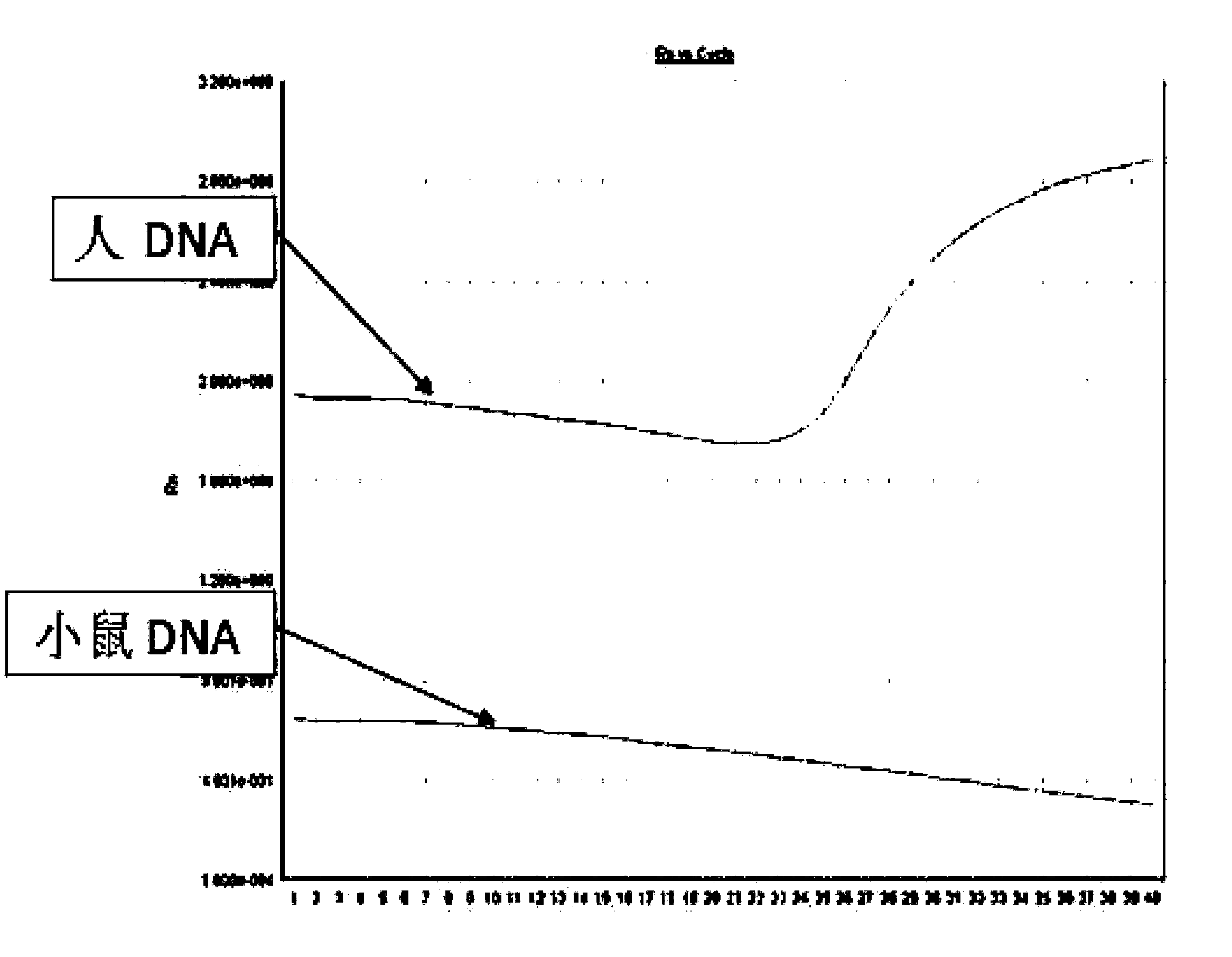Use of human Down's syndrome DNA sequence in detection on the number of human cells implanted in mouse
A technology for Down syndrome and DNA sequence, applied in the direction of recombinant DNA technology, DNA/RNA fragments, microbial determination/testing, etc., can solve the problems of low specificity, complex methods, poor repeatability, etc.
- Summary
- Abstract
- Description
- Claims
- Application Information
AI Technical Summary
Problems solved by technology
Method used
Image
Examples
Embodiment 1
[0022] Example 1. Obtaining of a kit for detecting human cells implanted in mice
[0023] 1. Sequence-specific analysis of Down syndrome
[0024] By analyzing the NCBI (National Center for Biotechnology Information) GenBank database to screen human-specific genome sequences, the human-specific Down syndrome sequence (Human Down Syndrome region of chromosome21, clone A37A2-1F8) on the 21st pair of chromosomes was finally selected. .ACCESSION: U50569, whose sequence is shown in sequence 3 in the sequence table), download the sequence, and use the sequence to perform Blast on rat and mouse genome sequences. The mouse genome sequence has great specificity and is an ideal target sequence to detect the number of human cells implanted in the mouse.
[0025] 2. Design of primer pair sequences
[0026] Based on the Down syndrome sequence as a template, multiple pairs of real-time PCR primers were designed with Generunner software, and these primer sequences were used to perform Blast...
Embodiment 2
[0033] Example 2. The kit for detecting human cells implanted in mice The effect of detecting the distribution of human mesenchymal stem cells in mice with myocardial infarction after intravenous injection was verified. .
[0034] The specific method of preparing the acute myocardial infarction model in mice (BALB / c was purchased from the Animal Center of Southern Medical University) is as follows
[0035] 1. Experimental animals
[0036] 11-12 weeks balb / c mice, body weight 25-30g
[0037] 2. Surgical instruments
[0038] 2% sodium pentobarbital solution; dermatome; adhesive tape and pins for fixation; iodine, alcohol; surgical blades; Needle, curved forceps, straight forceps, non-invasive suture needles, operating table, 8 / 0 sutures, 10 bundles of 5 / 0 nylon threads; small animal ventilator, electrocardiogram machine; incandescent lamp 60w.
[0039] 3. Anesthesia, immobilization, monitoring
[0040]Inject 2% pentobarbital sodium solution (50mg / kg) intraperitoneally, obse...
PUM
 Login to View More
Login to View More Abstract
Description
Claims
Application Information
 Login to View More
Login to View More - R&D
- Intellectual Property
- Life Sciences
- Materials
- Tech Scout
- Unparalleled Data Quality
- Higher Quality Content
- 60% Fewer Hallucinations
Browse by: Latest US Patents, China's latest patents, Technical Efficacy Thesaurus, Application Domain, Technology Topic, Popular Technical Reports.
© 2025 PatSnap. All rights reserved.Legal|Privacy policy|Modern Slavery Act Transparency Statement|Sitemap|About US| Contact US: help@patsnap.com



